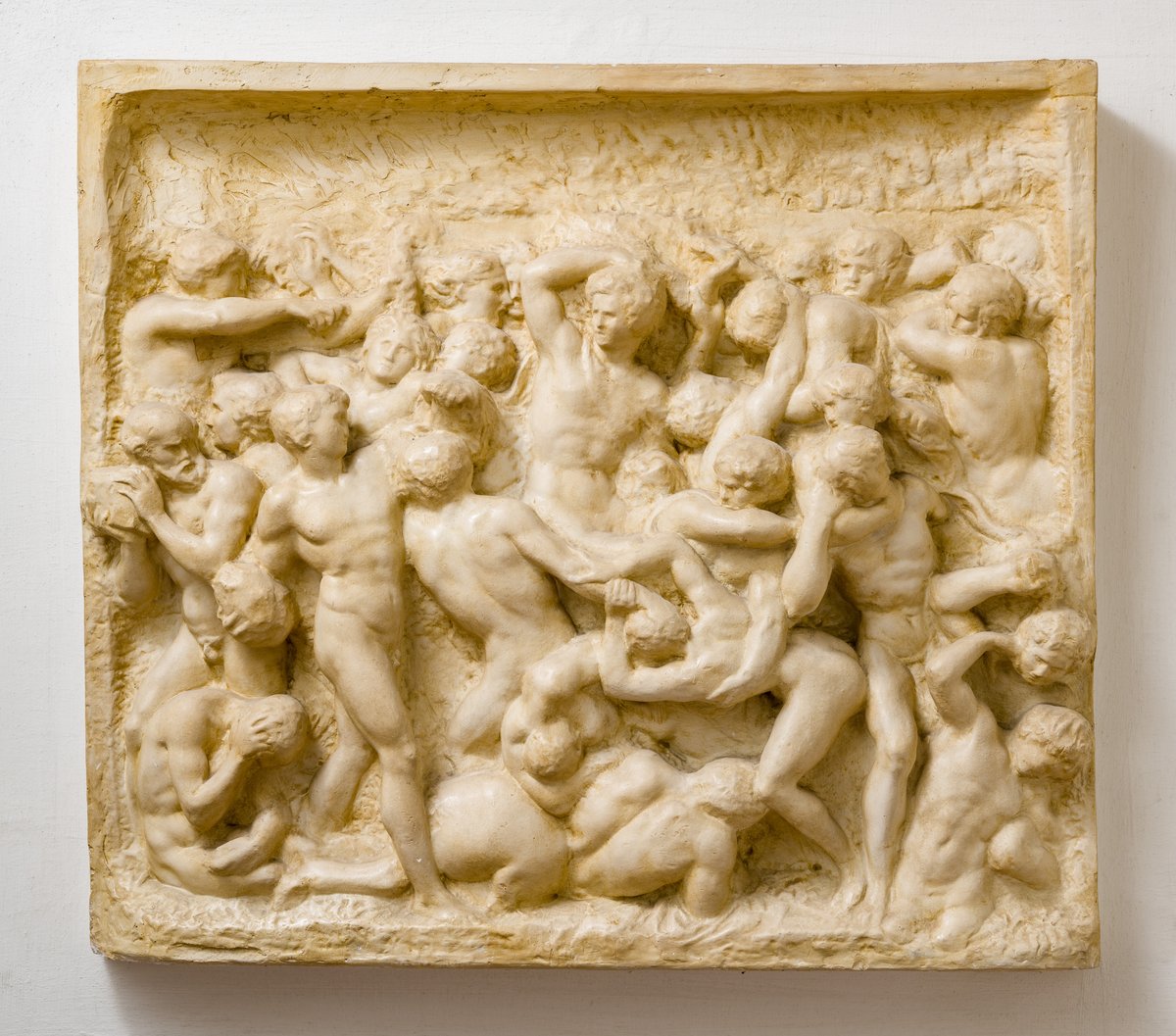
Battle of the Centaurs
Sculptures
| Artist | |
|---|---|
| Date | ca. 1200 (original), 1907 (cast) |
| Object type | plaster cast |
| Medium, technique | plaster cast |
| Dimensions | 189 × 100 × 100 cm, 400 kg |
| Inventory number | Rg.129 |
| Collection | Sculptures |
| On view | National Museum Conservation and Storage Centre, Visible Storage |
The cast was made of the base of the work considered to be the largest seven-branched bronze candelabrum of the Middle Ages. The candlestick is held by four dragons linked together by sections of vine tendrils containing biblical scenes. The allegorical figures of Rhetoric, Dialectic, Geometry and Music are housed in the tendrils rising from the twisted tails of the dragons. For a long time, the candlestick, executed with utmost care and meticulousness, was regarded as the work by the foremost medieval goldsmith Nicholas of Verdun. However, according to recent research, the candelabrum came to Milan Cathedral in 1550 from Rouen. Its manufacture in Normandy is also substantiated by its style. Repairs were already carried out in Milan in 1562, presumably the time when the additions were made by the Milanese bronze founder, Giovan Antonio Busca. Commissioned by the museum in 1907, the cast was made by Carlo Campi in Milan, and it was exhibited in the Romanesque Hall in 1909.
This record is subject to revision due to ongoing research.